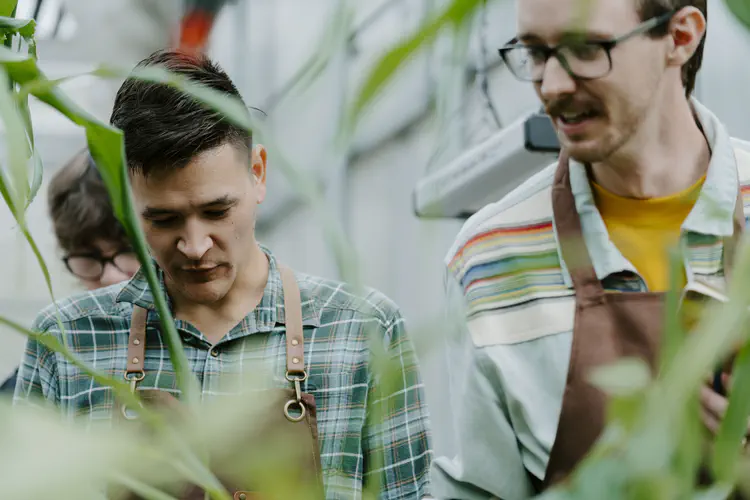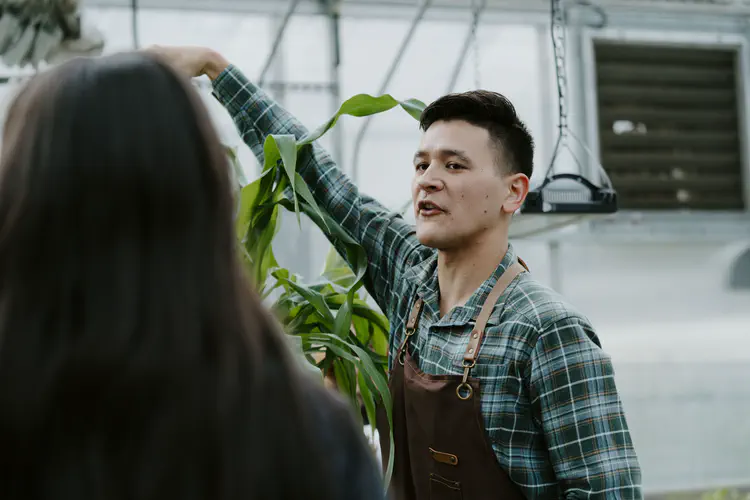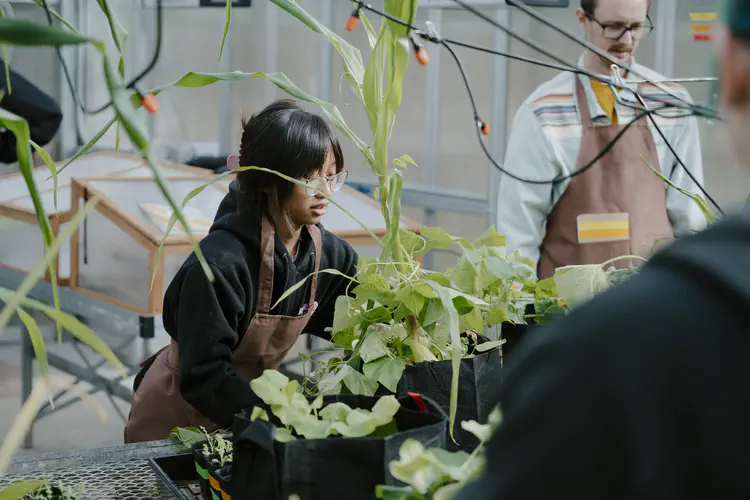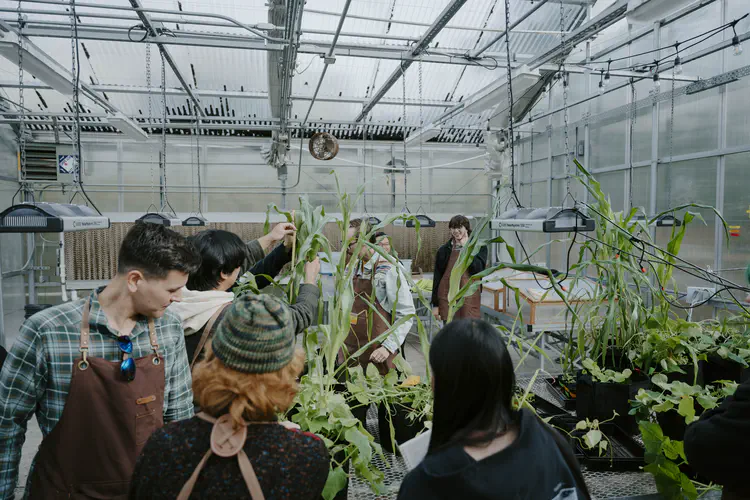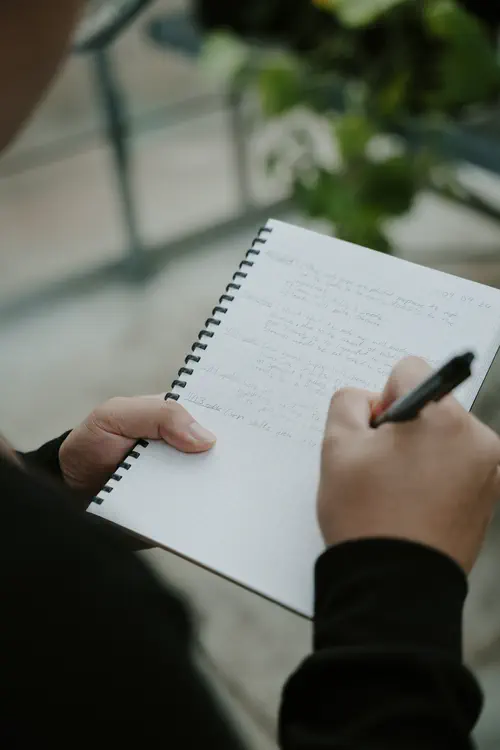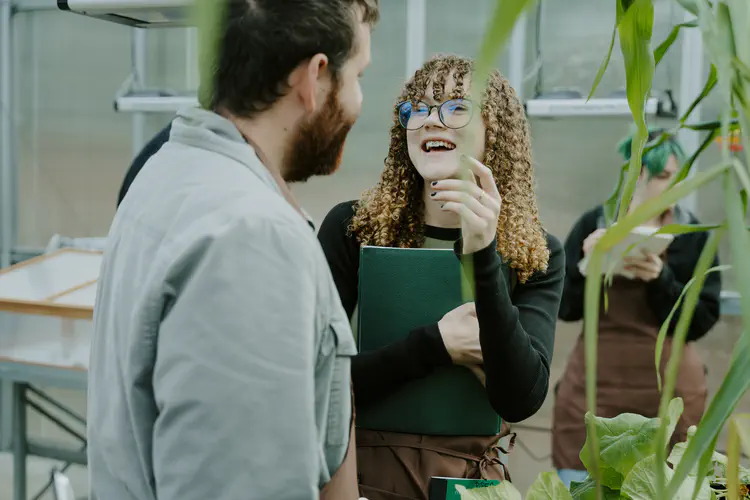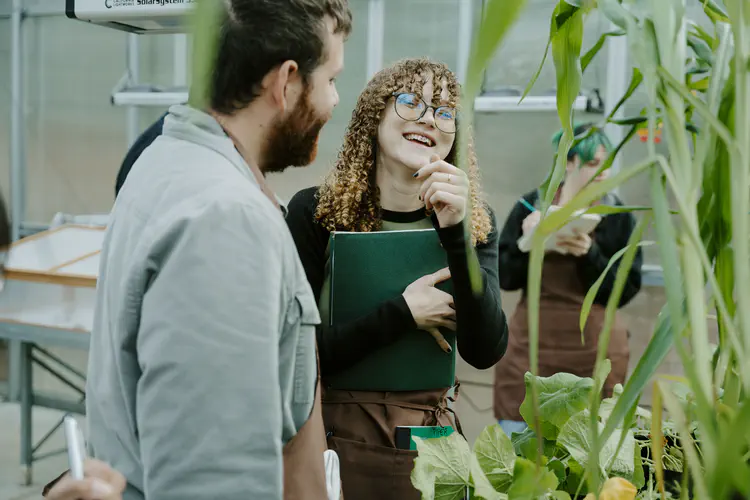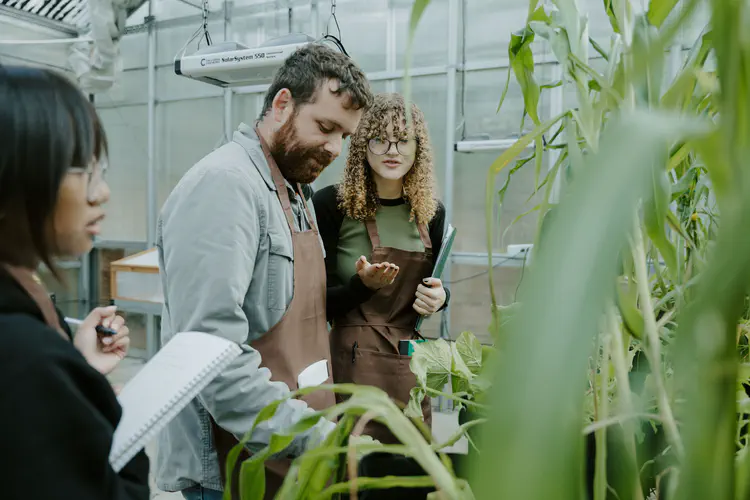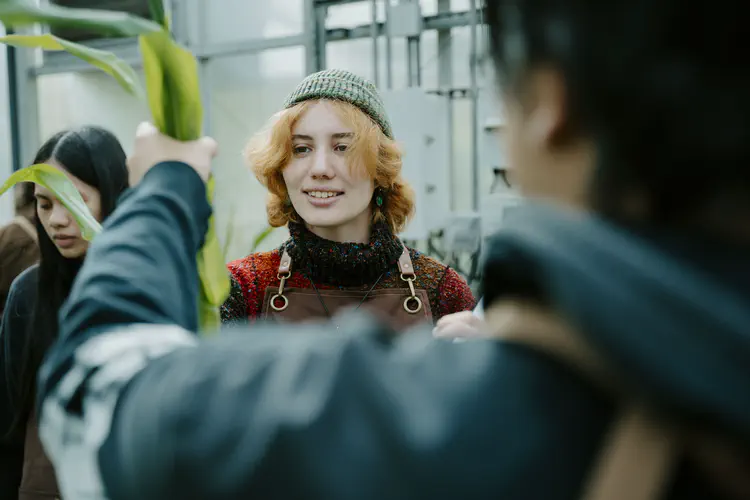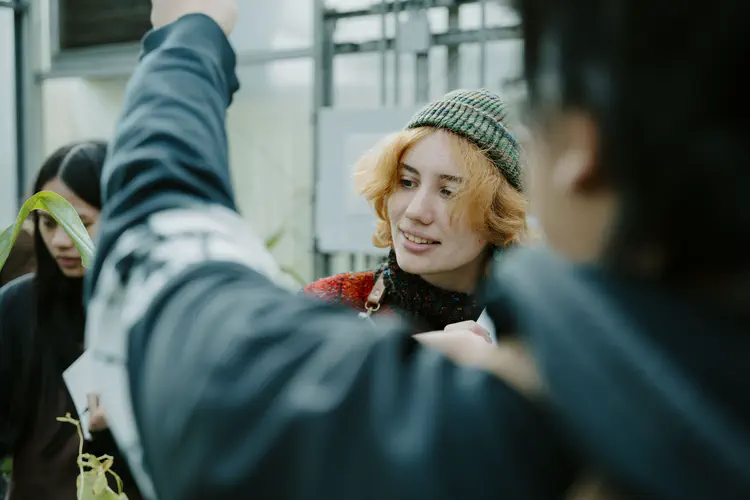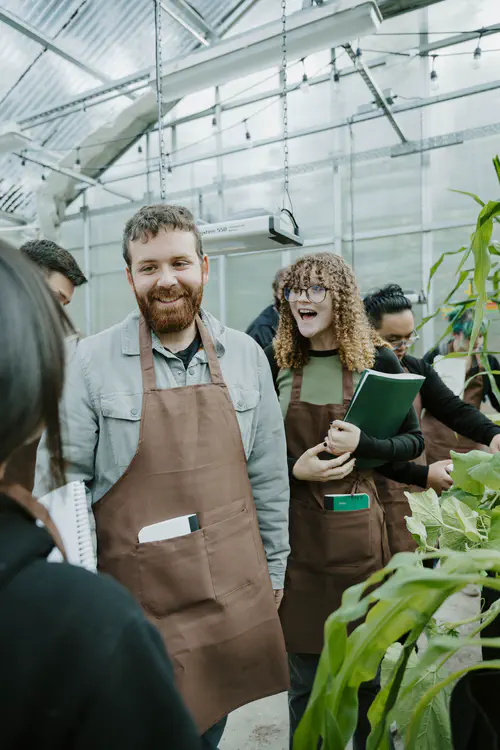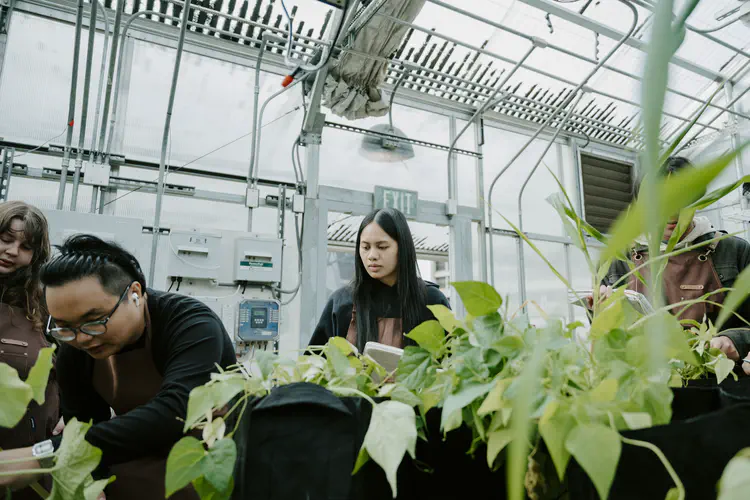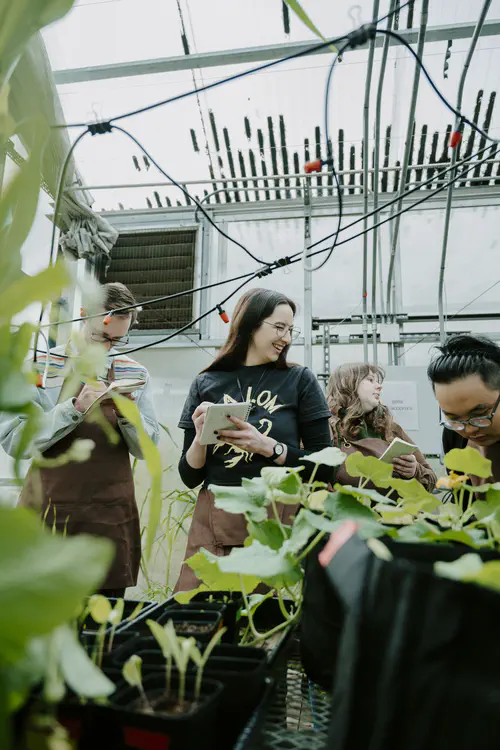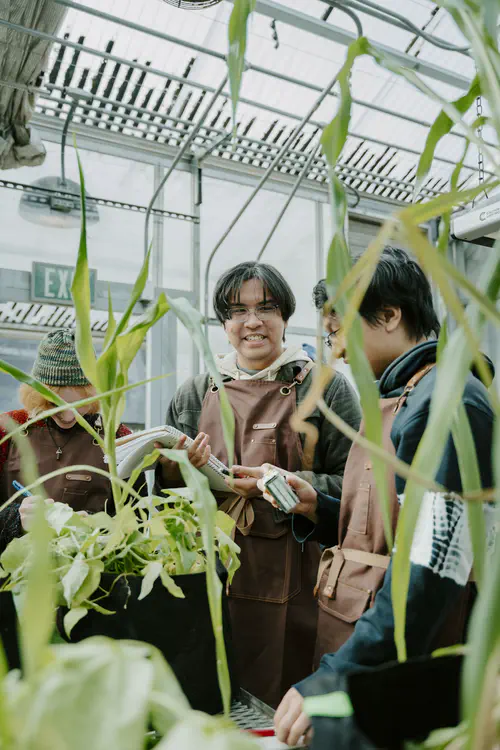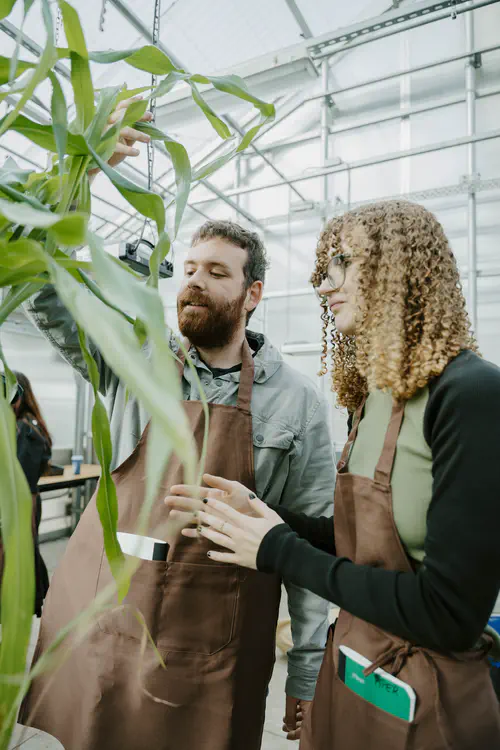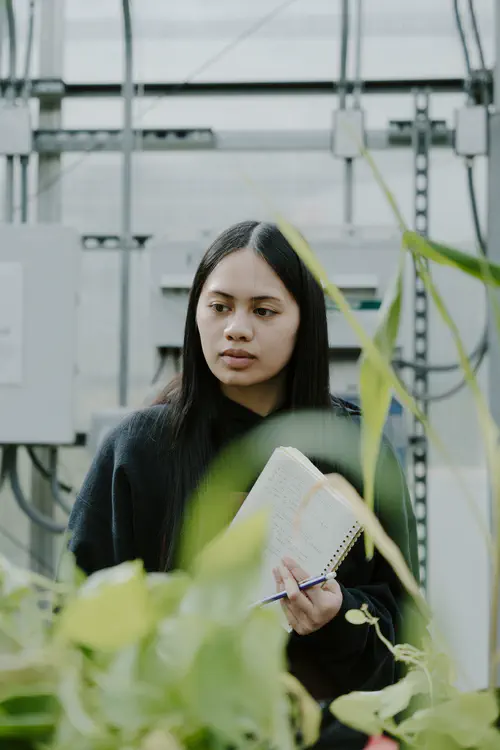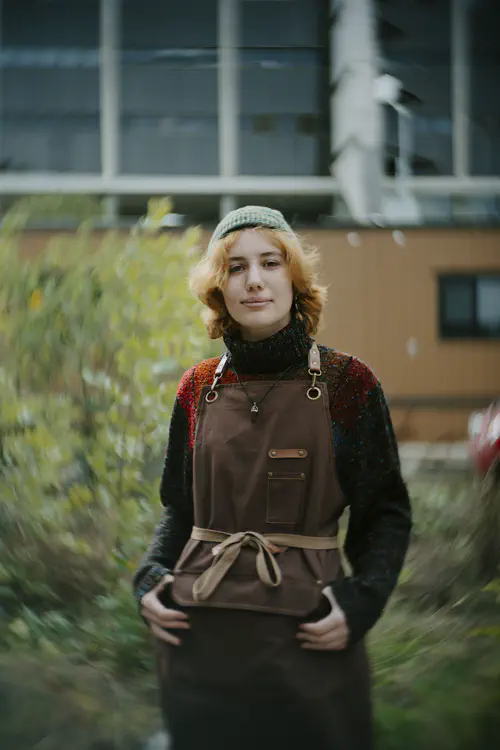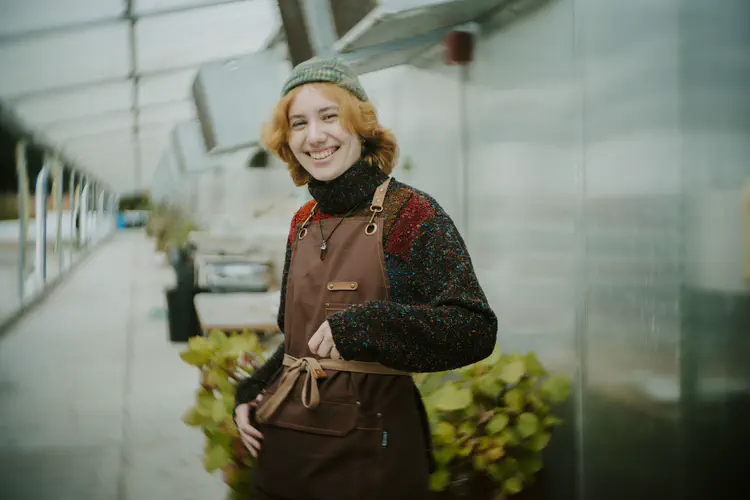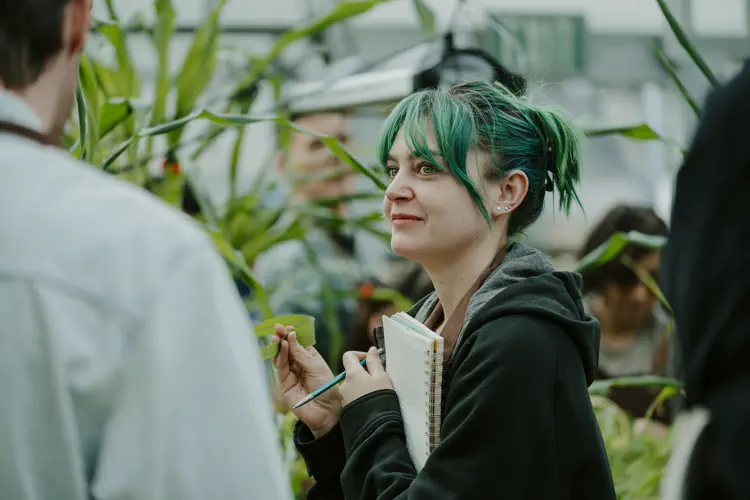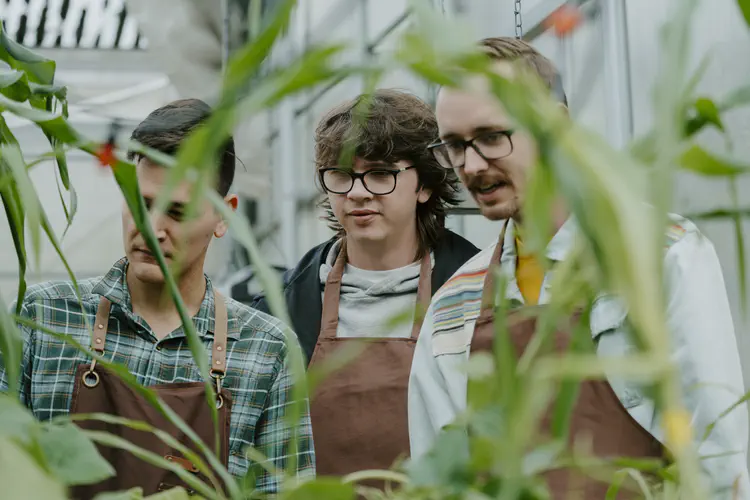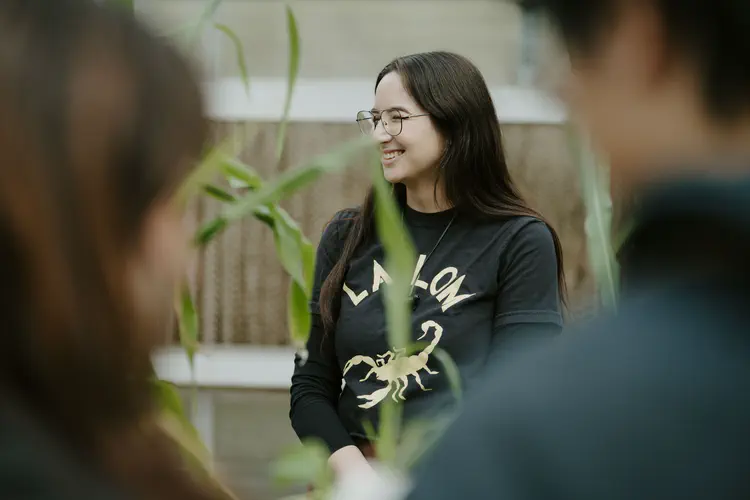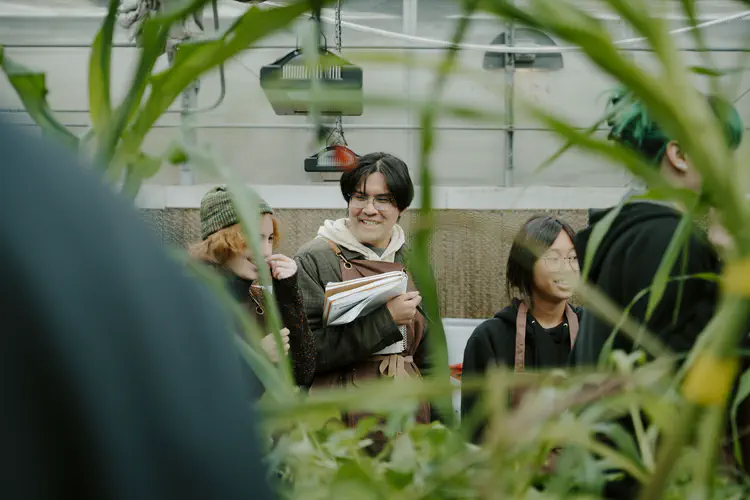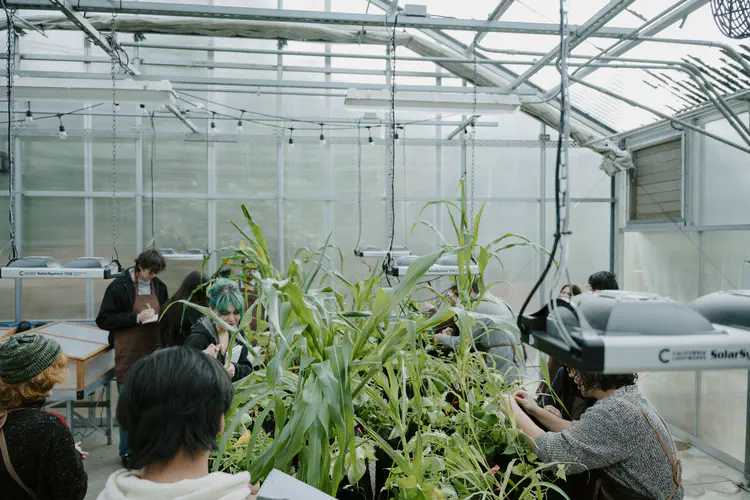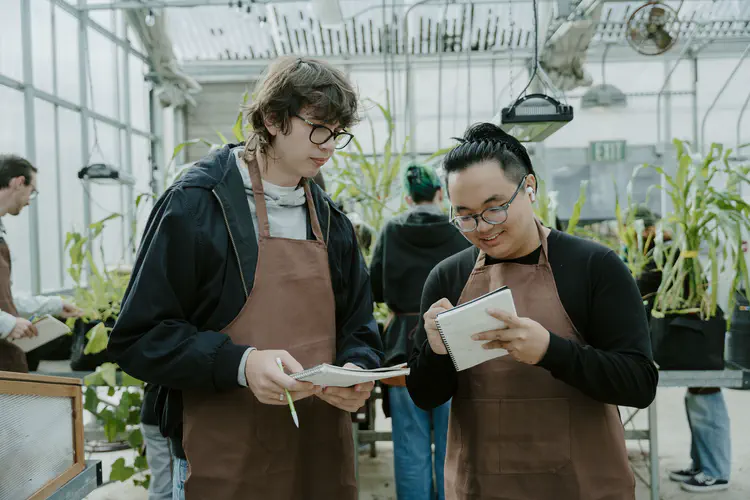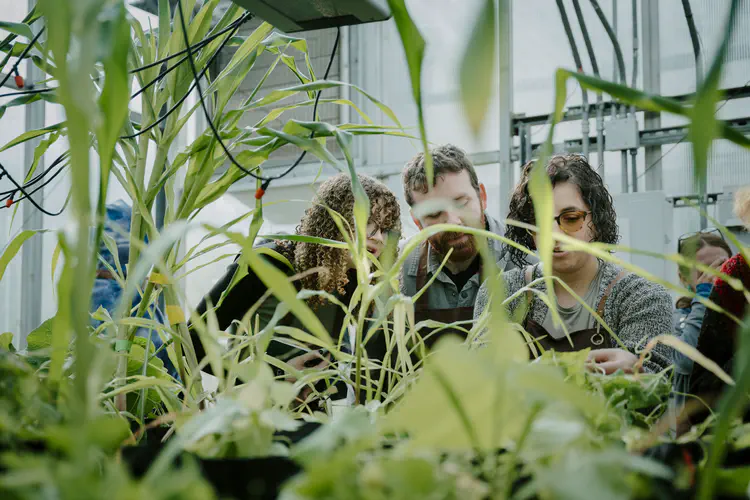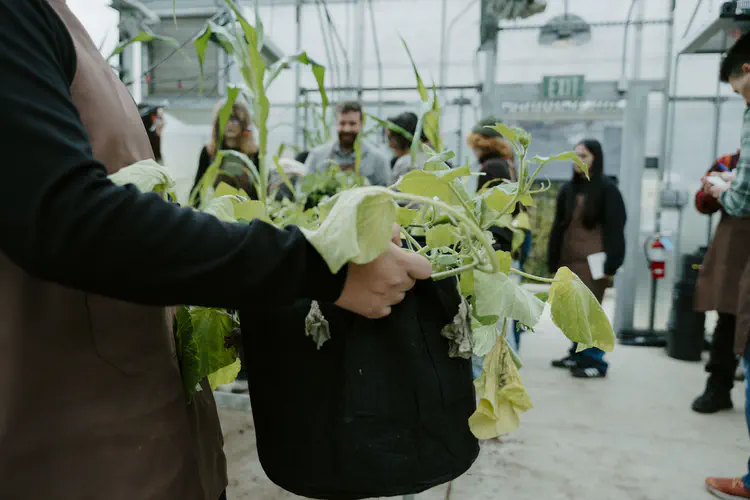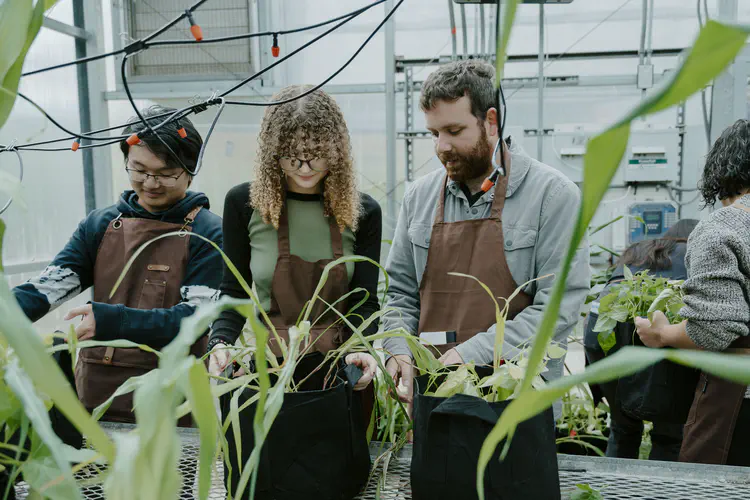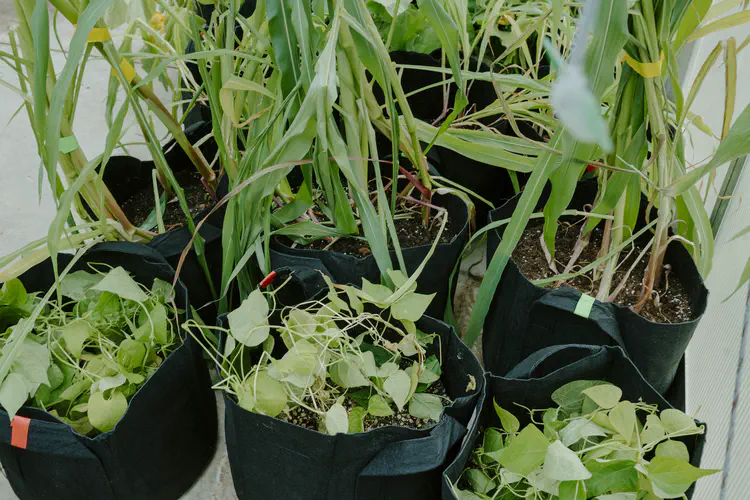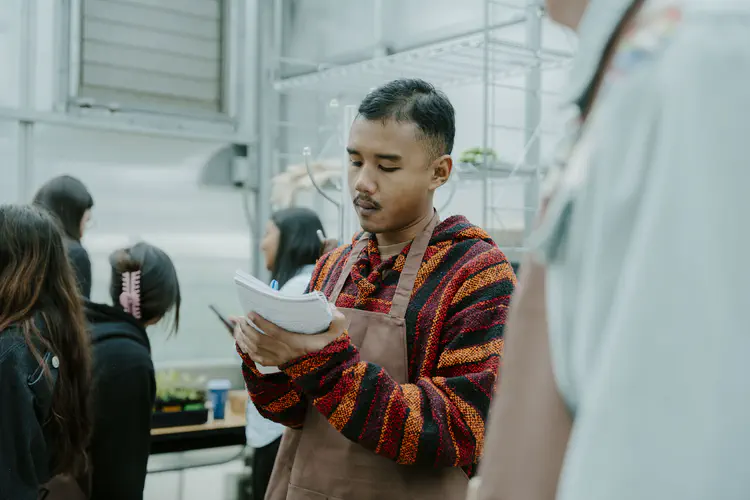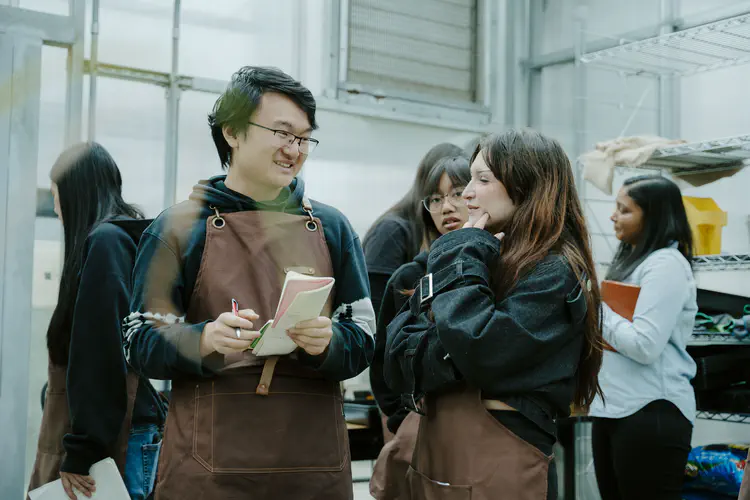Growing in Relationship: Plant Ecology, the Three Sisters, and Traditional Ecological Knowledge

In our Plant Ecology course this semester, we didn’t just study plants: we studied relationships.
Between plants and environment. Between species. Between people and land. Between traditional ecological knowledge and western science. We built the class around a semester-long experiment using the Three Sisters planting system: corn, beans, and squash grown together. This planting system has long been used by Indigenous peoples across the Americas, especially in the Northeast and Mesoamerica, where it remains an important part of cultural and agricultural traditions. We studied it by performing a greenhouse experiment and by reading both western science and about traditional ecological knowledge (TEK), especially through Braiding Sweetgrass* by Robin Wall Kimmerer.

Bringing TEK into the classroom
Since the first day of class, I have tried to make it clear that this wasn’t a course about plants or ecosystems in isolation, but about plants as part of ecological and cultural systems, and that humans are and always have been a part of both. Plant ecologist and Citizen of Potawatomi Nation Kimmerer writes about the Three Sisters in terms of both biology and values. Corn gives structure, beans fix nitrogen, squash protects the soil. But she also talks about how they support one another, and what that can teach us. The book gave us a way to think about science that includes observation, care, and responsibility.
The experiment: Monocultures vs. polycultures
How do the Three Sisters grow together compared to alone? What happens if we use different legume species? How does soil nutrient level affect plant growth in each case?




We grew plants in both monoculture and polyculture, in both nutrient-rich and nutrient-poor soils. We expected polycultures to do better in low-nutrient soil because of the help legumes provide. Students measured corn height, and flowers, fruit, and final biomass of all species, then entered their data into a shared spreadsheet.
What we learned
We measured biomass, flower/fruit yield, and corn height, but the biggest lessons were not about our particular results. We explored how facilitation and resource partitioning can lead to higher productivity in polycultures and how TEK systems like the Three Sisters reflect ecological principles long before they had names in Western science. Braiding Sweetgrass helped us think critically about what science gains when we make space for different ways of knowing. It reminded us that scientific inquiry doesn’t have to be extractive (and perhaps should not be).

Main Results
Soil nutrient level had a significant effect on plant performance across all treatments and combinations. Nutrient-poor soil consistently reduced yield: plants were shorter, lighter, and produced fewer flowers and fruits, regardless of whether they were in monoculture or polyculture.


Interestingly, we found that while corn grew taller in monoculture, total biomass per shoot was higher in polyculture, suggesting more efficient biomass production when grown with companions. Pole bean mass was also higher in polyculture, further supporting our hypothesis that plant partnerships can boost performance, possibly through facilitation and nitrogen sharing.

Unfortunately, we were unable to analyze shoot mass for polyculture plants in nutrient-poor soil, as the data for this treatment combination was never uploaded to the shared spreadsheet, despite the fact that the plants were harvested and measured. This limited our ability to fully evaluate one of the most important conditions in our experimental design.

We also made observations that sparked questions and hypotheses. Early on, corn monocultures grew quickly and looked more vigorous. This early advantage seemed to wane over time. We wondered whether there might be a benefit to germinating around members of the same species, particularly for corn, where monocultures seemed to gain physical stability from neighboring stalks. Their roots appeared to intertwine and hold each other up, especially in the taller monoculture pots. This led to broader questions about how seedling roots might behave—intertwining, avoiding, or supporting—depending on the species mix. Moreover, this observation made us wonder whether benefits of polyculture may play out more in a longer-term experiment.
Another striking observation came from our backup plants, which we had culled for space. When we uprooted them, we noticed a difference in root architecture by soil type. In nutrient-poor soil, roots were long, thin, and exploratory, as if searching for nutrients (this was especially true for corn roots). In nutrient-rich soil, roots were much shorter and more compact, forming dense upside-down shrubs just beneath the surface. Though we didn’t measure these traits, they offered visual cues about how soil resources might shape plant behavior below ground.

Lessons about logistics
One unexpected but valuable takeaway had less to do with the plants and more to do with the logistics of a large group collaboration. During the final harvest, we discovered that not only were sample sizes reduced, but entire treatment combinations were effectively lost due to missing data. Although the measurements were taken for polyculture plants grown in nutrient-poor soil, for example, the persons responsible for recording those data never uploaded it, and we had no way of identifying who worked with those pots.


In future semesters, I plan to assign pots directly to individual students and require real-time data entry or direct upload to prevent these kinds of gaps. Overall, we need to establish a lot clearer protocols and ensure that the same people are performing the same measurements across treatment types to have more reliable results. This experience became a good teaching moment, not just about ecological research, but about accountability, communication, and the structure of collaborative work in science.
Looking forward
As climate change continues to put strain on our ecosystems and agricultural systems, there is growing recognition that TEK offers insights for sustainable land management and resilience. Our class experiment is a small-scale attempt to understand that wisdom not only through scientific methods, but through relationship with plants and with the teachings that have long sustained the land. The Three Sisters were our lessons, our collaborators, and our teachers. And they reminded us, as Kimmerer says, that “all flourishing is mutual.”
See it in action
The photos in the album below are from a single greenhouse session late in the semester, shortly before harvest day, and are courtesy of San Francisco State University Strategic Marketing and Communications.
